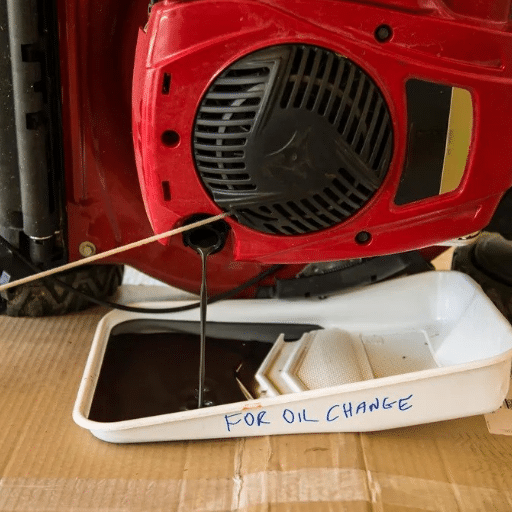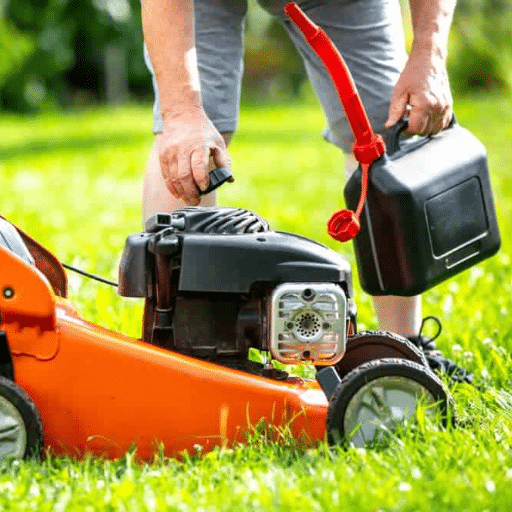A lush, green lawn is the hallmark of a well-cared-for home, but achieving that perfect balance of health and beauty can be challenging—especially when weeds start to invade. This is where weed and feed products become your ultimate ally. But with so many options lining store shelves, how do you select the one that’s right for your yard? Understanding how these products work and identifying the specific needs of your lawn are key to making an informed choice. In this article, we’ll break down exactly what weed and feed is, its benefits, and the essential factors to consider when choosing the best product for a vibrant, weed-free lawn. Whether you’re a seasoned gardener or tackling lawn care for the first time, this guide will equip you with the knowledge to maintain a thriving, picture-perfect lawn.
What is Weed and Feed and How Does it Work?
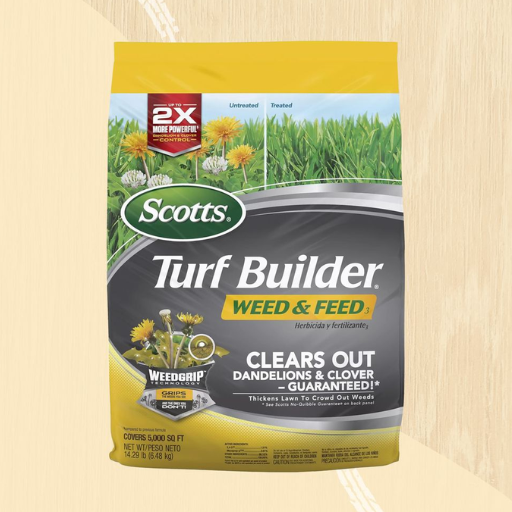
Weed and feed is a type of lawn care product designed to perform two functions simultaneously: eliminate weeds and nourish your grass. The “weed” component typically contains herbicides that target common broadleaf weeds like dandelions and clover, preventing them from competing with your lawn. The “feed” part provides fertilizers with essential nutrients, such as nitrogen, phosphorus, and potassium, to encourage healthy grass growth. When applied correctly, weed and feed helps create a lush, green lawn by addressing both unwanted weeds and nutrient deficiencies in a single application.
Understanding Weed Control in Lawn Care
Weeds are not just an eyesore; they compete with your lawn for essential resources such as sunlight, water, and nutrients. To effectively manage weeds, it is crucial to understand their growth patterns and lifecycles. Broadly, weeds can be classified as annual, perennial, or biennial. Annual weeds like crabgrass grow and die within one season, while perennials such as dandelions return year after year if not properly managed.
A critical aspect of weed control in lawn care is timing. Pre-emergent herbicides, for example, work best when applied before weeds germinate. This is particularly effective for annual weeds such as crabgrass, which typically begin germination when soil temperatures reach about 55°F for several days. On the other hand, post-emergent herbicides target actively growing weeds and are most effective when applied during their specific growth periods. Studies show that targeted applications can reduce weed populations by up to 80% in a single season.
Another vital factor in weed control is maintaining a dense and healthy lawn. Research indicates that a thick sod of grass can delay or suppress weed growth because it limits the available space and resources weeds need to thrive. Regular mowing, proper irrigation, and adequate fertilization all contribute to creating a lawn that can naturally outcompete invasive weeds.
For best results, it is often recommended to combine cultural practices, such as proper lawn maintenance, with selective or non-selective herbicides tailored to your lawn’s unique challenges. By adopting an integrated approach, you can achieve a long-term solution for weed management while promoting the health of your lawn ecosystem.
The Role of Fertilizer in Weed and Feed
Fertilizer plays a critical role in the effectiveness of weed and feed products. These products are designed with a dual purpose: to nourish your lawn with essential nutrients while targeting and eliminating invasive weeds. The fertilizing component typically provides key macronutrients such as nitrogen (N), phosphorus (P), and potassium (K) — collectively known as NPK. Nitrogen encourages lush, green grass growth; phosphorus enhances root development, and potassium helps improve resilience against stress and disease.
Modern weed and feed blends often incorporate slow-release nitrogen, which ensures a steady supply of nutrients over time, minimizing rapid growth spurts that can exhaust the grass. Studies show that lawns receiving balanced fertilizers with an NPK ratio suited to their soil conditions experience increased thickness and density, reducing the space available for weeds to take root. For example, a blend with nitrogen levels around 20%-30% is typically recommended for most grass types, promoting uniform growth while discouraging weed invasions.
Furthermore, optimal fertilization can improve the ability of grass to recover from environmental stressors, such as drought, heat, or heavy foot traffic. Healthy, well-fed grass naturally shades the soil, reducing opportunities for sunlight to reach weed seeds, which drastically limits their growth potential. By strategically combining fertilizers with herbicides in a weed and feed formula, you can efficiently manage weeds while supporting a vibrant, thriving lawn.
Types of Weed and Feed Products
- Granular Weed and Feed
Granular products are applied using a spreader, offering a slow and steady release of nutrients while targeting weeds. These products are ideal for evenly covering larger lawns and are weather-resistant if lightly watered after application.
- Liquid Weed and Feed
Liquid formulations are applied using a hose-end sprayer or specialized spray equipment. They quickly penetrate the soil and are best for spot treatment or smaller lawns. This type is great for fast-acting results and precise application.
- Pre-Emergent Weed and Feed
Pre-emergent products are specifically designed to prevent weed seeds from germinating. They work effectively on annual weeds like crabgrass, tackling the problem before it even begins.
- Post-Emergent Weed and Feed
These products target existing weeds that are already growing in the lawn. They are especially effective against broadleaf weeds like dandelions and clover, helping restore your lawn’s uniform appearance.
- Organic Weed and Feed
Organic formulations rely on natural ingredients like corn gluten meal, which suppresses weed seed germination while enriching the soil. This option is environmentally friendly and safe for children and pets.
- Combination Seasonal Weed and Feed
These products are tailored to specific seasons, such as spring or fall. For example, spring formulas encourage growth and tackle early weeds, while fall formulas focus on strengthening the lawn for winter and preventing cold-weather weeds.
Using the right type of weed and feed based on lawn size, weed type, and season will help you maintain a healthy, lush lawn while efficiently dealing with unwanted weeds.
How to Apply Weed and Feed Correctly?
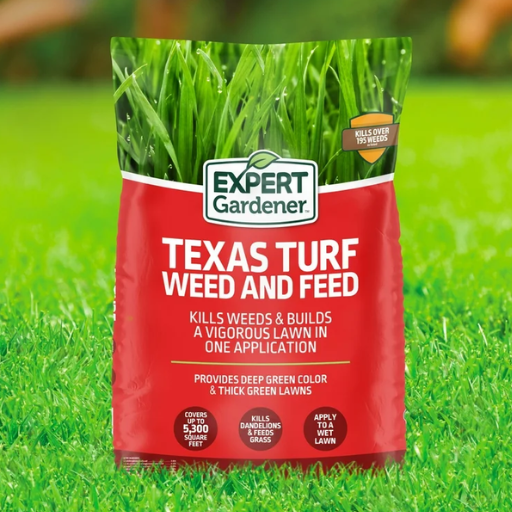
- Mow Your Lawn: Start by mowing your lawn to a medium height before application. This ensures the product can reach the weeds effectively.
- Water the Lawn Lightly: Lightly water your lawn if it is dry to help the product stick to the weed leaves. Avoid applying weed and feed on overly wet lawns to prevent product runoff.
- Check the Weather Forecast: Apply weed and feed when no rain is expected for at least 24–48 hours. This allows the product to work without being washed away.
- Apply Evenly: Use a broadcast or drop spreader for granular weed and feed, or a sprayer for liquid versions, to ensure even distribution. Avoid overlapping to prevent over-application in certain areas.
- Avoid Immediate Watering: Refrain from watering your lawn or allowing heavy foot traffic for 24–48 hours after application. This ensures the product has time to be absorbed effectively.
- Observe and Maintain: Monitor your lawn’s progress over the following days. Repeat application later in the season if needed, following the product’s recommended usage guidelines.
By following these simple steps, you can ensure the weed and feed is applied efficiently and your lawn remains healthy and weed-free.
Best Practices for Applying Weed and Feed
- Choose the Right Product: Selecting the appropriate weed and feed product is crucial. Products come in different formulations for warm-season or cool-season grasses. Ensure the product matches your grass type, and check its effectiveness against the specific weeds you want to eliminate.
- Apply During the Optimal Season: Timing is key when applying weed and feed. Generally, it works best in the spring or early fall when weeds are actively growing. Soil temperatures between 55°F and 75°F are ideal for herbicide absorption and nutrient uptake.
- Weather Considerations: Avoid applying weed and feed during rainy or extremely windy conditions. Rain can wash away the product before it has a chance to take effect, while strong winds can cause uneven application or spread chemicals to unintended areas.
- Proper Application Rates: Follow the product’s label instructions closely to avoid over-application, which can harm your grass and nearby plants. Overuse of chemicals can also contribute to environmental concerns like runoff into waterways.
- Leave Grass Dry Before and After Application: Most products require dry grass before application to ensure the granules stick to the weeds’ leaves. Avoid watering or mowing the lawn 24–48 hours before and after applying the product to maximize its efficiency.
- Safety First: Wear protective gloves, masks, and eyewear while handling the product. Keep children and pets off the treated area until it is safe, as indicated by the product instructions—usually after a watering or rain.
- Supplement the Treatment: Weed and feed works best as part of a broader lawn care approach. Regular mowing, aeration, and watering promote healthier grass growth, which naturally chokes out weeds over time.
- Track Application Frequency: To maintain a thick, green lawn, avoid over-applying weed and feed. Many experts recommend no more than two applications per year to prevent chemical build-up and potential lawn damage.
By incorporating these best practices, you’ll enhance the effectiveness of your weed and feed treatment while fostering a lush and thriving lawn environment.
When is the Best Time to Apply Weed and Feed?
The ideal time to apply weed and feed products largely depends on the type of weeds you aim to control and the grass variety in your lawn. For cool-season grasses like Kentucky bluegrass or fescue, early spring or fall is most effective. This is when weeds are actively growing, and the fertilizer enhances the lawn’s natural growth cycle. On the other hand, warm-season grasses such as Bermuda or St. Augustine benefit from weed and feed applications in late spring through early summer, or once the grass has fully emerged from dormancy.
Timing is also influenced by environmental factors. For optimal results, apply weed and feed when the temperature is between 60°F and 85°F, as this range encourages effective absorption by weeds while minimizing stress on the grass. Additionally, the lawn should be slightly moist before application—either from early morning dew or light watering the day before—but avoid applying when significant rainfall is expected, as this could wash away the product before it penetrates the soil.
Pay attention to specific weed varieties. For instance, broadleaf weeds like dandelions typically emerge in early spring, making this the best period for treatment. Grassy weeds, such as crabgrass, may require a pre-emergent weed and feed applied in early spring, before temperatures consistently reach 55°F, as this prevents seeds from germinating.
By aligning your application schedule with the growth habits of both your grass and prevailing weed types, you’ll ensure healthier lawn development while maximizing the product’s efficiency. Regularly assessing weather conditions and following a consistent care routine will further contribute to long-term lawn health.
Common Mistakes in Weed and Feed Application
- Applying at the Wrong Time
Timing is critical when using weed and feed products. A common error is applying them too early or too late in the season. For pre-emergent weed control, application should occur in early spring before soil temperatures reach 55°F, as this is when many weed seeds begin to germinate. Conversely, post-emergent weed and feed should be applied when weeds are actively growing, typically in late spring or early summer. Not aligning timing with weed growth cycles may drastically reduce the product’s effectiveness.
- Overapplication
Many homeowners mistakenly believe that using more product than recommended will enhance results. However, overapplication can harm your lawn, burning grass, and damaging the soil’s health. It is essential to follow the product’s instructions carefully, ensuring that application rates are appropriate for your yard’s size and specific requirements.
- Using the Wrong Product
Selecting a weed and feed product that doesn’t match your lawn type or the types of weeds present is another frequent mistake. Different grasses, such as cool-season and warm-season varieties, have unique needs and tolerances. Similarly, specific products are designed to target certain weeds. Using the wrong formulation for your lawn or weed type can lead to poor results and even damage your grass.
- Improper Watering Practices
Watering at the wrong time can hinder weed and feed effectiveness. For instance, some products require water to activate their weed-killing components, while others need a dry period to adhere to weeds properly. Always consult the product label for guidance on pre- and post-application watering to maximize efficiency.
- Uneven Application
Uneven distribution often leads to inconsistent results, with some areas of the lawn over-treated while others remain untouched. This is commonly caused by not using a spreader or failing to calibrate it properly. To ensure your lawn receives even coverage, use a high-quality spreader and take the time to apply in a consistent, overlapping pattern.
- Ignoring Weather Conditions
Weather plays a crucial role in successful weed and feed application. Applying the product in high winds can cause uneven distribution or drift, while heavy rainfall shortly after application may wash the product away. For best results, choose a calm day with minimal wind and no rain forecast for at least 24-48 hours after treatment.
By avoiding these common mistakes, you can optimize the effectiveness of your weed and feed applications, ensuring a healthy, vibrant lawn throughout the year. Proper planning, product selection, and adherence to instructions will go a long way in achieving the desired results.
Which Weed and Feed Product is Right for Your Grass Type?
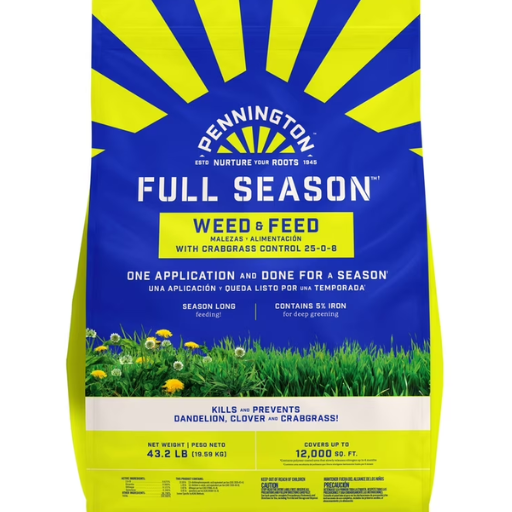
Choosing the right weed and feed product for your grass type is essential for achieving the best results. Different grass types have unique needs, so it’s important to match the product to your lawn. For warm-season grasses like Bermuda, St. Augustine, or Zoysia, select a product formulated specifically for these varieties to avoid damaging the grass. For cool-season grasses such as Kentucky Bluegrass, Perennial Ryegrass, or Fescue, opt for a weed and feed designed to support growth during their active seasons.
Always read the product label carefully to confirm compatibility with your grass type and follow the application instructions closely. This ensures proper nutrient absorption while effectively controlling weeds without causing harm to your lawn.
Matching Weed and Feed to Grass Types like St. Augustine and Bermuda
When selecting the right weed and feed for grass types such as St. Augustine and Bermuda, it’s crucial to consider their different growth habits and needs. St. Augustine grass thrives in warm, humid climates and requires a weed and feed product specially designed for broadleaf weed control and nitrogen-rich feeding. Look for products labeled as safe for St. Augustine grass, as this variety is sensitive to some herbicides like those with atrazine, which is often recommended but must be used in moderation during the growing season.
For Bermuda grass, known for its durability and preference for direct sunlight, a weed and feed product focused on sustained, slow-release nitrogen is ideal. This type of fertilizer supports Bermuda’s dense and spreading growth pattern while keeping high-nutrient soils weed-free. Some data suggests applying these products during Bermuda’s active growth seasons—late spring through summer—can maximize effectiveness.
Timing also plays a key role in the success of weed and feed applications. For both St. Augustine and Bermuda grasses, it’s important to wait until any frost risks have passed and temperatures consistently remain above 60°F, as this promotes both weed germination and nutrient absorption. Always check the soil moisture and apply the product when the grass and soil are slightly damp, but not saturated, to ensure proper adherence and distribution.
By understanding the specific requirements of your grass type and following these guidelines, you can maintain a lush, thriving lawn while keeping weeds in check.
Understanding Manufacturer’s Instructions
Carefully following the manufacturer’s instructions is crucial for achieving the best results when applying lawn care products. Begin by reviewing the product label in detail, as it provides essential information on proper application rates, timing, and any specific precautions to take. For instance, granular pre-emergent weed control products often specify application rates in pounds per 1,000 square feet, making it important to measure your lawn area accurately to prevent over- or under-application.
Timing recommendations also vary, depending on the product type and purpose. It is common for pre-emergent herbicides to require activation by watering shortly after application, while some fertilizers may include slow-release formulas designed to provide nutrients gradually over weeks or months. Always note any temperature or weather-related restrictions, as applying these products outside optimal conditions—such as during extreme heat or heavy rain—can reduce effectiveness or even harm the lawn.
Additionally, knowing the compatibility of the product with your specific grass type is critical. For example, some weed control products may be labeled as safe for bermudagrass but unsuitable for cool-season grasses like Kentucky bluegrass or fescue. Most manufacturers also include safety guidelines, such as wearing gloves or ensuring proper storage away from moisture and sunlight, to ensure both personal and environmental safety.
By combining comprehensive awareness of the product label with a clear understanding of these factors, homeowners can maximize the effectiveness of treatments, avoid costly mistakes, and enjoy a healthy, vibrant lawn year-round.
How to Achieve a Weed-Free Lawn?
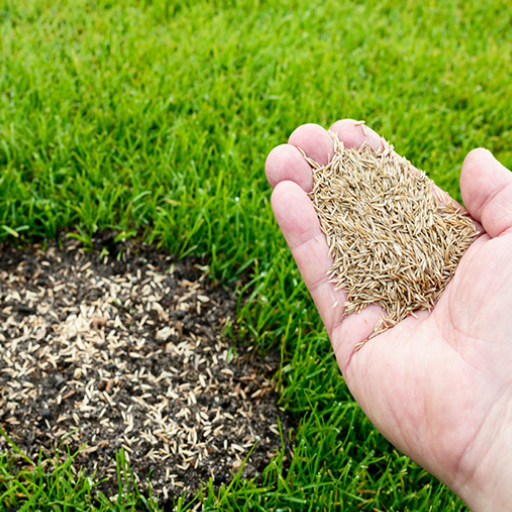
To achieve a weed-free lawn, start with proper lawn care practices. Mow your lawn regularly at the recommended height to prevent weeds from receiving sunlight. Water deeply but infrequently to encourage strong grass roots. Fertilize appropriately based on the needs of your grass type and season to ensure healthy growth that can outcompete weeds. For existing weed problems, use a targeted herbicide that is safe for your specific grass and follow application instructions carefully. Lastly, consider overseeding bare or thin areas to prevent weeds from taking hold. Consistency and prevention are key to maintaining a lush, weed-free lawn.
Using Pre-emergent and Post-emergent Herbicides
Pre-emergent and post-emergent herbicides are tools I use strategically to keep my lawn weed-free. Pre-emergent herbicides help me prevent weeds from germinating by creating a protective barrier in the soil, which I apply early in the growing season before weeds start to sprout. On the other hand, I rely on post-emergent herbicides to target and eliminate existing weeds that have already emerged. By carefully choosing the right product for my grass type and following the application instructions, I ensure these treatments are effective without harming my lawn.
Preventing Common Weeds like Dandelion and Clover
To prevent common weeds like dandelion and clover, I focus on maintaining a healthy, dense lawn since thick grass minimizes space for weeds to grow. I regularly mow at the proper height, fertilize appropriately, and ensure my lawn receives adequate water to promote strong root systems. Additionally, I apply pre-emergent herbicides early in the season and spot-treat any visible weeds with post-emergent solutions to keep my lawn weed-free.
Maintaining a Healthy Lawn with Regular Fertilization
To maintain a healthy lawn with regular fertilization, I ensure I use the right type of fertilizer for my grass type and apply it at the recommended times throughout the year. I follow a seasonal schedule, focusing on providing nutrients like nitrogen, phosphorus, and potassium to support growth, root development, and overall lawn health. By evenly spreading the fertilizer and avoiding over-application, I prevent damage to the grass and minimize nutrient runoff, keeping my lawn lush and vibrant.
What are the Best Lawn Care Practices for Optimal Weed Control?

To achieve optimal weed control, focus on maintaining a healthy, dense lawn that naturally suppresses weeds. Mow regularly at the correct height for your grass type, as cutting too short can weaken the lawn and allow weeds to grow. Water deeply but infrequently to encourage strong root development. Aerate the soil annually to prevent compaction and improve nutrient absorption. Control weeds early by manually removing them or applying a pre-emergent herbicide at the start of the growing season. For persistent weeds, use a post-emergent herbicide targeted at specific weed types, following all label instructions carefully. Consistent care and attention are key to minimizing weed growth and keeping your lawn in excellent condition.
The Importance of Mowing and Watering
Mowing and watering are two of the most critical aspects of lawn care as they directly influence the health, appearance, and resilience of your grass. Proper mowing involves maintaining an ideal grass height, which typically ranges between 2.5 to 4 inches, depending on the grass type. Research shows that keeping grass at a slightly taller height improves photosynthesis, encourages deeper root systems, and helps shade out weeds. It is recommended to follow the “one-third rule,” meaning never cutting more than one-third of the grass blade at a time to reduce stress on the plant.
Watering, on the other hand, ensures the lawn receives adequate moisture for growth and can withstand environmental stressors. Most lawns require about 1 to 1.5 inches of water per week, including rainfall, to stay healthy. Deep and infrequent watering is essential, as it encourages roots to grow deeper into the soil, making the grass more drought-resistant. Watering early in the morning, preferably between 6 a.m. and 10 a.m., reduces evaporation and fungal disease risks. By combining proper mowing and watering techniques, you can create an optimal environment for a lush, green lawn that thrives throughout the growing season.
Choosing the Right Lawn Fertilizer for Best Results
Selecting the appropriate lawn fertilizer is key to ensuring your grass gets the nutrients it needs to thrive. Fertilizers typically consist of three primary nutrients—nitrogen (N), phosphorus (P), and potassium (K)—commonly referred to as the NPK ratio. Nitrogen promotes vibrant green growth, phosphorus supports strong root development, and potassium increases resilience to stress such as drought and disease. When selecting a fertilizer, it is important to understand your lawn’s specific needs and soil conditions.
A standard soil test can determine nutrient levels and pH balance, allowing you to choose a fertilizer tailored to these conditions. For instance, lawns in nitrogen-deficient soils benefit from high-nitrogen fertilizers, with common NPK ratios like 20-10-10 or 25-0-5. For newly seeded lawns, phosphorus-rich options, such as a 10-20-10 ratio, enhance root establishment. Slow-release fertilizers are another excellent choice, as they provide a steady supply of nutrients over time, reducing the risk of over-fertilization and promoting sustainable growth.
Timing and application are just as important as the type of fertilizer. The best time to fertilize cool-season grasses, such as Kentucky bluegrass or perennial ryegrass, is during early spring and fall when growth is most active. Conversely, warm-season grasses like Bermuda or Zoysia grass should be fertilized in late spring and summer for optimal growth. Avoid applying fertilizer during periods of drought or extreme heat, as this can stress the lawn further.
Finally, consider environmentally friendly options such as organic fertilizers, which are derived from natural sources like compost, bone meal, or plant-based ingredients. These fertilizers not only provide essential nutrients but also improve soil health over time. By understanding your lawn’s specific needs and selecting the most suitable fertilizer, you can create a vibrant, healthy lawn that endures the demands of each growing season.
Integrating Weed and Feed into Your Lawn Care Routine
Weed and feed products are a convenient solution for addressing both weeds and nutrient deficiencies in your lawn. These products combine fertilizer with herbicides, targeting broadleaf weeds like dandelions or clover while simultaneously nourishing your grass. To effectively incorporate weed and feed into your lawn care routine, timing is crucial. Apply the product during the growing season, typically in early spring or fall, when weeds are actively growing, and your grass can take full advantage of the added nutrients.
According to available data, proper application can reduce weed coverage by up to 75% within a few weeks, depending on the product used and the type of weeds present. For best results, mow your lawn one to two days before application to ensure proper absorption, and avoid watering the lawn for 24 to 48 hours after applying weed and feed to allow the herbicide to adhere to the weeds effectively. Additionally, choose a product suited to your grass type to maximize efficiency and avoid potential damage.
Remember that overapplication can harm your lawn or the environment, so always follow the manufacturer’s instructions. By integrating this dual-purpose product into your routine with care and precision, you can maintain a lush, thriving lawn while minimizing the labor involved.
Reference Sources
-
University of Illinois Extension: The dilemma with weed-and-feed lawn products – Discusses the pros and cons of using weed-and-feed products, focusing on their impact on lawns and the environment.
-
Iowa State University Extension: Corn Gluten Meal – A Natural Weed and Feed for Lawns – Explores the use of corn gluten meal as a natural alternative for weed control and lawn feeding.
-
University of Florida IFAS Extension: Weed & Feed: Is It Helpful or Hurtful? – Examines the dual-purpose nature of weed-and-feed products and their effectiveness.
-
University of Georgia Extension: Weed Control in Home Lawns – Provides guidelines for effective weed control using herbicide-fertilizer mixtures.
-
Fairfax County Soil and Water Conservation: Weed Free Lawns – Highlights the use of corn gluten meal for pre-emergent weed control.
Frequently Asked Questions (FAQs)
Q: What is the best weed and feed for lawns?
A: The best weed and feed for lawns depends on your specific lawn care needs, such as the type of grass you have and the existing weeds you need to control. Products like Scotts Turf Builder can be effective for many lawns, offering both fertilizer and weed killer in one application.
Q: How does a weed and feed lawn product work?
A: A weed and feed lawn product works by combining fertilizer with a weed killer or weed preventer. The fertilizer helps feed the lawn, promoting a greener and healthier turf, while the weed killer targets and eliminates existing weeds.
Q: When is it best to apply weed and feed products?
A: It is best to apply weed and feed products in the early spring or early fall when weeds are actively growing. This timing allows the weed killer to effectively target weeds while the fertilizer provides necessary nutrients to the grass.
Q: Can I use weed and feed on new lawns?
A: It is generally not recommended to use weed and feed on new lawns until the grass is well-established. New grass can be sensitive to weed killers, so it’s best to wait until the turf is more mature before applying these products.
Q: How often should I use weed and feed on my entire lawn?
A: Most lawn care experts recommend using weed and feed products once or twice a year. Overuse can damage your lawn, so follow the manufacturer’s instructions for fertilizer use and application frequency.
Q: What types of grass are compatible with weed and feed products?
A: Most weed and feed products are compatible with a variety of grasses, including centipede, Bermuda, and Kentucky bluegrass. However, always check the product label to ensure it is safe for your specific type of grass.
Q: Can weed and feed help with crabgrass preventer?
A: While some weed and feed products include a crabgrass preventer, others may not. If crabgrass is a concern, look for a product specifically labeled as a crabgrass preventer to effectively manage this issue.
Q: Is there a difference between spring fertilizer and weed and feed?
A: Yes, spring fertilizer is primarily focused on providing nutrients to the lawn for growth, while weed and feed also includes a weed killer or preventer to manage lawn weeds. Choose based on your lawn’s specific needs.
Q: Can I apply weed and feed if I have southern weed issues?
A: Yes, many weed and feed products are formulated to handle common southern weeds. Look for products that specify they are effective against weeds common in southern regions.
Q: Are there any lawn care needs that should be addressed before applying weed and feed?
A: Before applying weed and feed, ensure your lawn is dry and recently mowed to the proper height. Avoid applying if heavy rain is expected, as this can wash away the product before it has a chance to work effectively.



